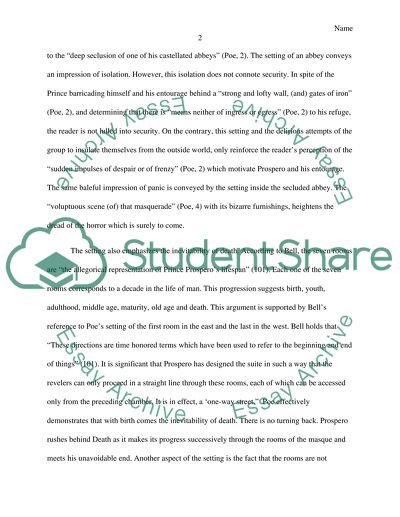Cite this document
(“The Masque of the Red Death: Use of Setting and Color Essay”, n.d.)
The Masque of the Red Death: Use of Setting and Color Essay. Retrieved from https://studentshare.org/literature/1472279-the-masque-of-the-red-death-use-of-setting-and-color
The Masque of the Red Death: Use of Setting and Color Essay. Retrieved from https://studentshare.org/literature/1472279-the-masque-of-the-red-death-use-of-setting-and-color
(The Masque of the Red Death: Use of Setting and Color Essay)
The Masque of the Red Death: Use of Setting and Color Essay. https://studentshare.org/literature/1472279-the-masque-of-the-red-death-use-of-setting-and-color.
The Masque of the Red Death: Use of Setting and Color Essay. https://studentshare.org/literature/1472279-the-masque-of-the-red-death-use-of-setting-and-color.
“The Masque of the Red Death: Use of Setting and Color Essay”, n.d. https://studentshare.org/literature/1472279-the-masque-of-the-red-death-use-of-setting-and-color.


